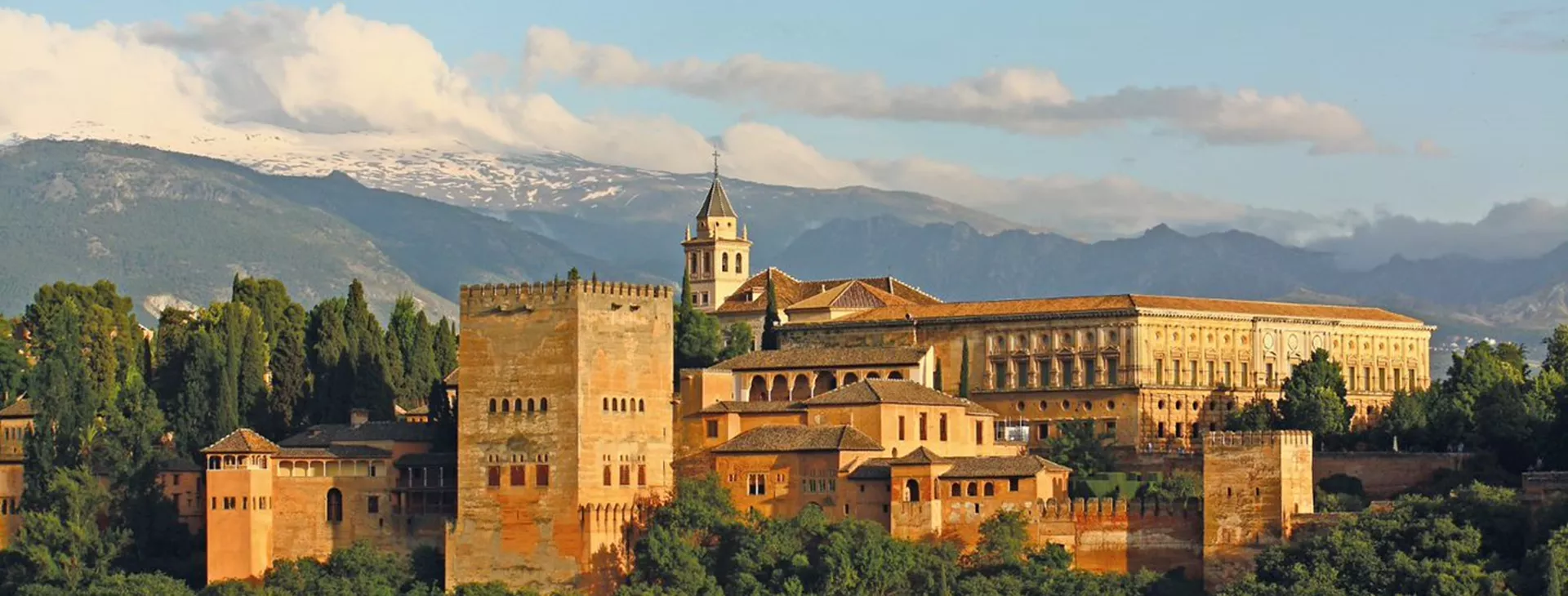
United States
© Luxury Gold 2025. All Rights Reserved. TICO 50015871 / 1873715
MAKE TRAVEL MATTER® is a trademark of The TreadRight Foundation, registered in the U.S. and other countries and regions, and is being used under license.
Experience Spain like never before with our small group tours and dedicated Travel Concierge.
13 DAYS
Experience the passion, creativity and romance of Spain and Portugal, as you witness fiery flamenco performances, marvel at Gaudi’s dreamy architecture and appreciate enchanting citrus-scented squares.
Proud to be Awarded Platinum Trusted Service Award by ![]()
"Learnt So Much"
"Very well organised and educational. Learnt so much and really immersed into the local culture."
- Wai Mun Wong, Spain and Portugal in Style, August 2023
"Truly a Luxury Tour"
"This was truly a luxury tour. Our Tour Concierge, Betty, was amazing in terms of knowledge, personality, keeping us all together, and fun. The tour bus was very comfortable, and WiFi was a great bonus"
- Trusted Customer, Spain and Portugal in Style, June 2024
Must-see landmarks
With a lengthy list of notable artists and architects through the ages, including Pablo Picasso, Salvador Dali and Antonio Gaudi, it’s no wonder Spain is rich with artistic and architectural wonders. La Sagrada Familia is a structural sensation and must-see, with origins also dating back to the 1800s. Declared as a UNESCO World Heritage Site, this immense cathedral has undergone nearly 150 years of construction and is actually still incomplete, with a scheduled finished date being in 2026. While in Granada, the Alhambra Palace deserves attention, as a decoratively impressive masterpiece, together with the Generalife Gardens that offer a romantic backdrop to stir your senses.
Traditional cuisine
Bursting with flavour, Spanish regional cuisine will expose your taste buds to all manner of pleasures. You will frequently come across salsa rosa – a pink, creamy, slightly sweet sauce that is typically served with shellfish as a first course. Gazpacho is a refreshingly chilled soup made of a perfectly smooth blend of ripe tomatoes, olive oil, garlic, bread, peppers and cucumber. Maintaining the simple but effective theme, the Tortilla Española, or Spanish Omelet is literally just eggs, potatoes and onions that have been slowly fried in olive oil. It is then often enhanced with chorizo, courgettes, spinach or ham. The tapas staple Patatas Bravas is simpler still but just as tasty; white potatoes are first boiled, then fried before being served in a spicy tomato-based sauce. And of course, no Spanish adventure is complete without sampling the local paella. For dessert, turrón (an almond nougat), although typically eaten at Christmas, is available any time of year, and churros con chocolate will leave you feeling more than satisfied as you dip the crispy cinnamon dough sticks into a cup of warm, melted chocolate.
Traditional beverages
When it comes to drinking in Spain, it’s not all about sangria and you might be surprised by some unlikely concoctions; red wine mixed with Coca-Cola (known as kalimotxo) and coffee combined with rum, brandy, whisky or anisette (known as carajillo) are just two Spanish treats that work well in the sunshine. Cava is a sparkling wine, typically produced in Catalonia, that can either be white or rosé and is very popular with the locals. It is also used as a base in the Spanish cocktail Agua de Valencia (or ‘Valencia Water’), mixed together with orange juice, gin and vodka. If you’d like to stick to soft drinks, Orxata (or Horchata as it is alternatively known), is made of ground almonds, sesame seeds, rice, barley, tiger nuts, or melon seeds. While it does come pre-packaged, nothing beats the fresh version made on site. Don’t leave Spain without giving this a try!
Landscapes and Wildlife
With an astounding mix of green rolling hills, alpine mountain ranges, flat coastal plains, stunning valleys, inviting forests, rich grasslands, resilient drylands, and multiple lagoons and wetlands, Spain’s natural landscapes are truly diverse. Starting from the top, the Pyrenees, Montserrat, Sierra Nevada, Picos de Europa and Serra de Tramuntana are some of the most significant Spanish mountains that make for spectacular scenery. Meanwhile, Spain’s Costa Brava is one of the most dramatic coastlines in the Mediterranean, with 125 miles of rugged cliffs, secluded coves and hidden villages.
Spain’s climate and wide range of habitats make for an interesting assortment of indigenous wildlife. Given its ideal location for migratory birds flying to Africa, Spain is a bird watcher’s paradise. Native bird species include flamingos, storks, vultures, eagles, kites and buzzards. Aside from an abundance of birds, Spain is home to the endangered Iberian lynx, the Mediterranean monk seal, Cantabrian brown bears, Iberian wolves and the Hierro giant lizards. Plus, a variety of deer, Iberian wild goats and boars, tortoises, bats, snakes, small reptiles and amphibians.
On Luxury Gold tours, your Travel Concierge is fluent in the local language and culture. Before you go, here is more information about Spain.
SPRING
MAR-MAY
avg. temp:
14˚C / 57˚F
SUMMER
JUN-SEP
avg. temp:
24˚C / 75˚F
AUTUMN
SEP-NOV
avg. temp:
12˚C / 54˚F
WINTER
DEC-FEB
avg. temp:
7˚C / 45˚F
